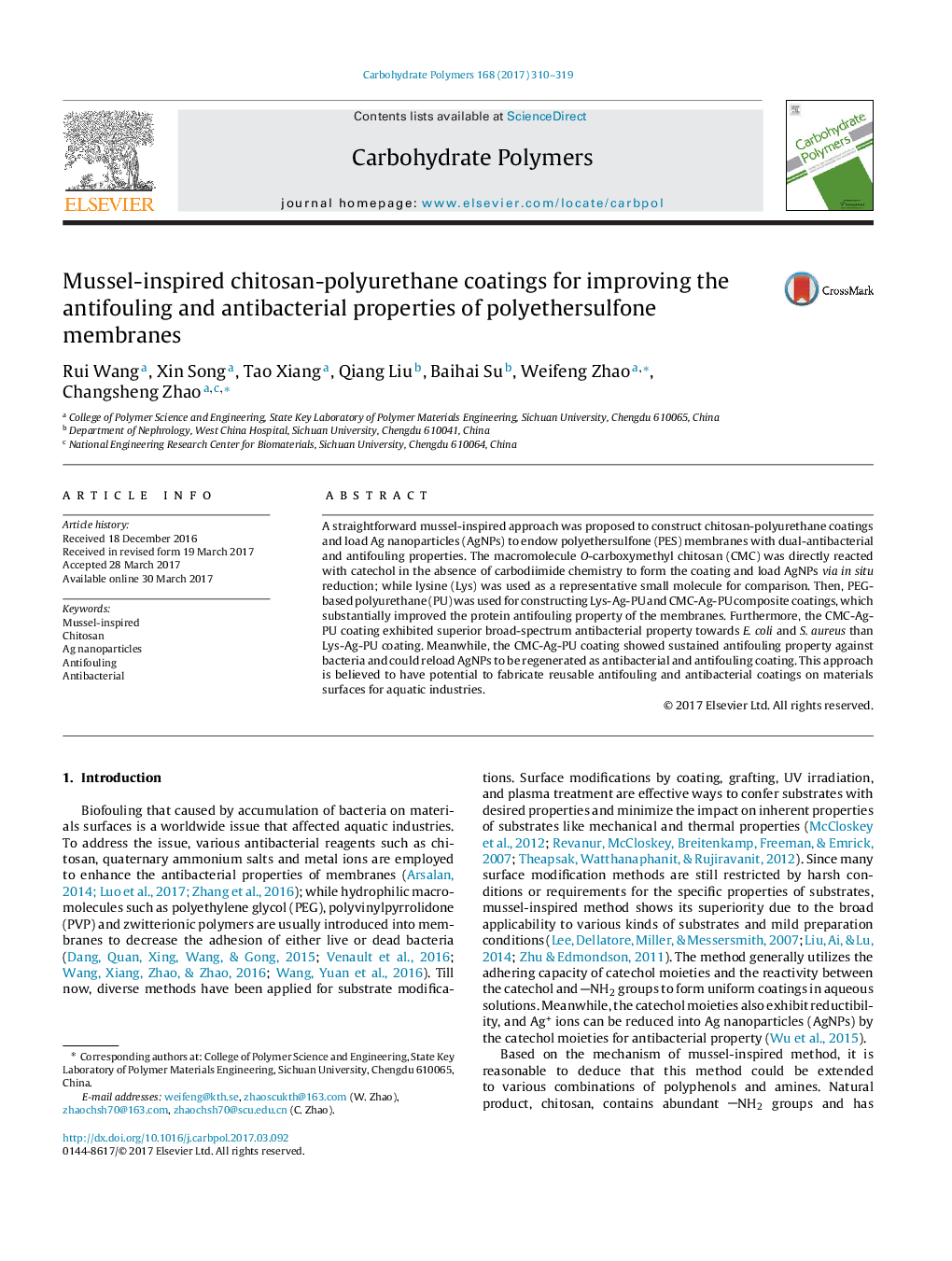| Article ID | Journal | Published Year | Pages | File Type |
|---|---|---|---|---|
| 5157123 | Carbohydrate Polymers | 2017 | 10 Pages |
Abstract
A straightforward mussel-inspired approach was proposed to construct chitosan-polyurethane coatings and load Ag nanoparticles (AgNPs) to endow polyethersulfone (PES) membranes with dual-antibacterial and antifouling properties. The macromolecule O-carboxymethyl chitosan (CMC) was directly reacted with catechol in the absence of carbodiimide chemistry to form the coating and load AgNPs via in situ reduction; while lysine (Lys) was used as a representative small molecule for comparison. Then, PEG-based polyurethane (PU) was used for constructing Lys-Ag-PU and CMC-Ag-PU composite coatings, which substantially improved the protein antifouling property of the membranes. Furthermore, the CMC-Ag-PU coating exhibited superior broad-spectrum antibacterial property towards E. coli and S. aureus than Lys-Ag-PU coating. Meanwhile, the CMC-Ag-PU coating showed sustained antifouling property against bacteria and could reload AgNPs to be regenerated as antibacterial and antifouling coating. This approach is believed to have potential to fabricate reusable antifouling and antibacterial coatings on materials surfaces for aquatic industries.
Related Topics
Physical Sciences and Engineering
Chemistry
Organic Chemistry
Authors
Rui Wang, Xin Song, Tao Xiang, Qiang Liu, Baihai Su, Weifeng Zhao, Changsheng Zhao,
